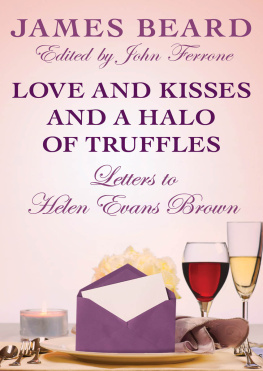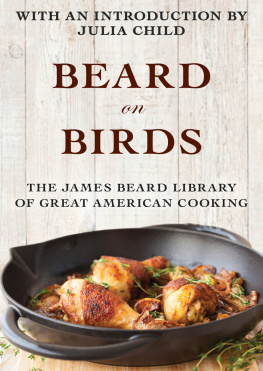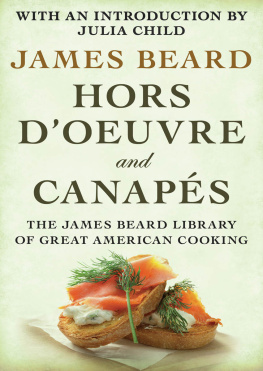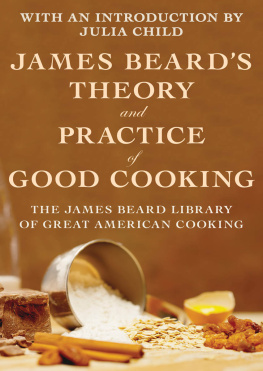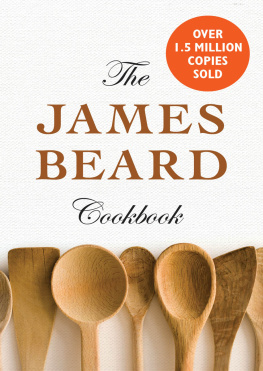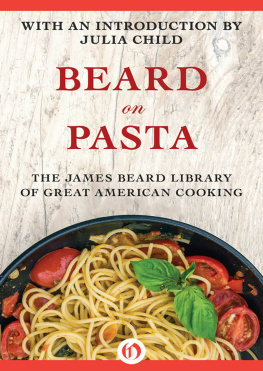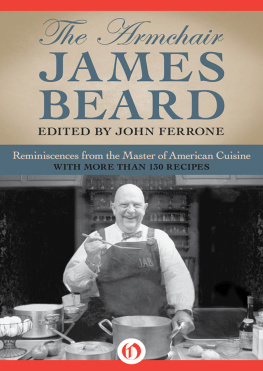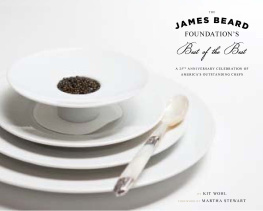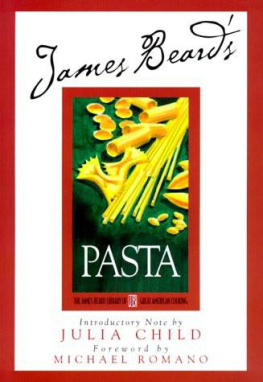Love and Kisses and a Halo of Truffles
Letters to Helen Evans Brown
James Beard
Edited by John Ferrone

Introduction
One day in October 1985, the year James Beard died, I had an urgent phone call from Clay Triplette, his loyal houseman. He had been ordered to clear Jims 12th Street apartment of every sign of human habitation so the house could be put up for sale. The contents had been auctioned off a few weeks before, financial records were in the hands of the executors, and the legendary kitchen was already a ghostly place, but there were bulging file cabinets in the basement destined for a Dumpster. After consulting one of the executors I went to the rescue. An hour later I carried away several shopping bags of files and assorted papers, which I stuffed under my bed, the only available storage space in my apartment. It was more than a year before I could sift through the cache, and when I did I struck gold. There in my hands in a tightly packed box of letters was James Beards love affair with food and with Helen Evans Brown.
In 1952, when they began to correspond, James Beard was stretching toward his full height as a titan of the table art, as the New York Times food editor had dubbed him, and Helen Evans Brown was the reigning authority on the West Coast. They had been introduced earlier by the food editor of McCalls when Helen was in New York lining up magazine assignments, but she really didnt catch Jims eye until publication of her West Coast Cook Book. Well-researched and charmingly writtenJim thought she was as good as M. F. K. Fisherit collected and documented the best recipes of the Pacific states. Razor clams and salmon cheeks may have reminded him of boyhood summers at the beach in his native Oregon, but, more important, Helen was carrying the flag for American cuisine, an idea dear to Jims heart. The book would become a model twenty years later for his own opus, AmericanCookery. He wrote her a fan letter. She wrote him one back. All four of his cookbooks were waiting for autographs, she told him, and she was looking forward to his fifth, Paris Cuisine, to be published that year. Thanks for the dope about the shrimp, she went on to say. I really knew they shouldnt be cooked over three to five minutes but I didnt have the guts to say so. This is how their dialogue on food began, and it never stopped until Helens death, twelve years later.
Helen and her husband, Philip, an antiquarian bookseller and accomplished cook, lived in Pasadena; Jim was based in New York. He paid the Browns a first visit in the spring of 1953, escalating friendship into love. Thereafter he could be sure of an affectionate welcome and an extra-long, extra-wide mattress. He could sit on the patio in a kimono with his morning tea, bird-watching. The Browns were as close to family as anything he would have in the years ahead. He was crazy about both of thema number of these letters are addressed to Philip or to Dear Brownsbut it was Helen he adored.
She was attractive, smart, outspoken, one of a series of strong-minded women who played a part in Jims life, but the one for whom he felt the deepest attachment. Although they were born just a year apart, Helen filled the role of a chiding and protective older sister. She was unfailingly supportive and gave him backbone when he fretted about his next move, but she also scolded when he overworked or soaked up too much butter and cream. On two or three occasions she lashed out at him in justifiable anger. He didnt accept criticism from many other people in his life. Helens unequivocal good sense was just what his wobbling psyche needed.
Like Jim, she had originated on one coast and migrated to the other. She spent her early years in Brooklyn and then studied at Connecticut College for Women and at Hunter College, in New York. It was during her first marriage, in New Haven, that she became interested in food; she ran a catering service, the Epicurean, with a friend and then a restaurant, named Brownstone House. She soon met Philip Brown, pulled up stakes, and moved to Los Angeles, by way of Reno. In 1940 she began writing a monthly mailing piece, Balzers Bulletin, for an upscale grocery store, and the following year, a food column for a new fashion magazine, The Californian. She published a small cookbook, Some Shrimp Recipes, in 1946 and a full-length cookbook, Chafing Dish Book, in 1950. By then she was writing for the West Coast magazine Sunset and for national magazines, including McCalls and House and Garden. She was well known enough to be approached by a major publisher, Little, Brown, for her next book, West Coast Cook Book.
Jim also made his debut in the food profession through a catering service, after failed careers in singing and acting. While looking for theatre work in New York in the late thirties, he met a German-born brother and sister with as deep an interest in food as his own. Together they started Hors dOeuvre, Inc., as a way of revitalizing cocktail-party food. It came to an end with the onset of World War II and publication of Jims first cookbook, Hors dOeuvre and Canaps (still in print), in which he neglected to credit his partners. During the war, after stints as cryptographer and farmhand, he was hired by the United Seamens Service to manage service clubs in Rio de Janeiro, Panama, and Marseille. By the time he returned to New York, at the end of 1945, two more of his cookbooks, Cook It Outdoors and Fowl and Game Cookery, had been published, which led to his being hired by NBC for a weekly TV show sponsored by Borden. His food demonstrations were the first ever on network television and helped to promote his image as an outsize pinup for good eating. But it was his next book, The Fireside Cook Book (1949), energetically promoted by his publisher, that made him famous and extended the repertory of American kitchens. He spent most of the following year living in Paris, where he met Alexander Watt, a Scottish journalist. They collaborated in writing Paris Cuisine, the book Helen was waiting for when she and Jim started to correspond.
As two evangelic cooks in an age of convenience foods, they had a lot to say about the sorry state of American cooking. Among their frequent targets were writers of quick-and-easy cookbooks and home economists, many of whom worked for big food packagers and some of whom were good friends. The rigidly practical approach of the home ec gals often clashed with Jims and Helens sensuous philosophy of food. She wasnt even allowed to call a dish lovely, Helen complained, and Jim got apoplectic in his bouts with a home ec mustard queen. Their recipes were routinely blue-penciled to eliminate anything that might strain the resources or wits of the average homemaker. (Men didnt count; they cooked outdoors.) How could the level of cooking be improved, Jim argued, if you aimed for the lowest common denominator? He and Helen believed with all their hearts that American cooks could be led to a promised land beyond tuna casseroles.
They felt pretty much alone in their mission. The only food authority of any stature on the scene was Dione Lucas, British exponent of the Cordon Bleu creed, whom Jim sometimes criticized while acknowledging her technical virtuosity. The most influential food critics were Clementine Paddleford of the New York Herald Tribune, Jane Nickerson of the New York Times, and Sheila Hibben of The New Yorker. Craig Claiborne, with a culinary schooling at the cole Hotelire in Lausanne, was about to bring a classic, Continental touch to the food columns of the Times. Julia Child and Simone Beck were ready to turn ordinary citizens into French chefs.
Next page
